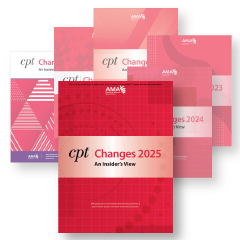by Christine Woolstenhulme, QMC QCC CMCS CPC CMRS
Apr 20th, 2020
Billing for an Emergency department is not the same as billing for a hospital or in the provider's office; there are several differences and requirements. For example. the hospital will report a stay with Diagnosis Related Groups (DRG's), which include hospital resources used during the patient's stay, while office visits are reimbursed for the use of the physician's resources in their office. Be sure the facility you are billing for meets the requirements with their license to bill and see patients in an actual emergency room setting, as the emergency department must first meet state requirements and be approved as a type "A" or Type "B".
Definition of Type A and B
According to CMS:
A Type A provider-based emergency department must meet at least one of the following requirements:
(1) It is licensed by the State in which it is located under applicable State law as an emergency room or emergency department and must be open 24 hours a day, 7 days a week; or
(2) It is held out to the public (by name, posted signs, advertising, or other means) as a place that provides care for emergency medical conditions on an urgent basis without requiring a previously scheduled appointment and must be open 24 hours a day, 7 days a week.
A Type B provider-based emergency department must meet at least one of the following requirements:
(1) It is licensed by the State in which it is located under applicable State law as an emergency room or emergency department, and open less than 24 hours a day, 7 days a week; or
(2) It is held out to the public (by name, posted signs, advertising, or other means) as a place that provides care for emergency medical conditions on an urgent basis without requiring a previously scheduled appointment, and open less than 24 hours a day, 7 days a week; or
(3) During the calendar year immediately preceding the calendar year in which a determination under 42 CFR 489.24 is being made, based on a representative sample of patient visits that occurred during that calendar year, it provides at least one-third of all of its outpatient visits for the treatment of emergency medical conditions on an urgent basis without requiring a previously scheduled appointment, regardless of its hours of operation.
For a provider-owned Emergency room, which includes both Type A and Type B emergency departments, the following HCPCS codes are used. Although Emergency Room charges are paid under OPPS they are to be billed on a UB-04, not a CMS-1500 in this location.
- Hospitals report Type A emergency department visits using HCPCS codes 99281-99285.
- Hospitals report Type B emergency department visits using HCPCS codes G0380-G0384.
- Hospitals report hospital outpatient clinic visits using HCPCS codes 99201- 99215 and 99241-99245.
Check out this FACT SHEET from CGS Medicare on coding 99285 - Emergency department visit.
According to the CPT guidelines, if a patient is admitted to an Ambulatory Surgical Center from the Emergency room the ED visit will not be reimbursed, it will be considered a part of the ASC reimbursement.
In addition, if a patient is admitted from the ER to the hospital, the admission will be considered a part of the DRG and the Emergency Department will not be reimbursed separately.
The Place of Service for an Emergency room visit is not the same as the professional visits you would bill in an office setting. Therefore, it is important to report the correct Place of Service Code (POS), such as 23 - for a Hospital Emergency Room or if it is an Urgent Care facility report POS 20. Be sure to understand the difference and how the facility is licensed.
Keep in mind the professional service for a physician may be billed in addition to the facility portion called split-billing, they will both be reporting the same Place of Service. The determining factor, in this case, is if the Physician owns the ER or is employed by the ER, if the physician is employed or owns the ER the fees will be included in the facility billing. If not, the treating physician will need to bill for the professional services provided to the patient.
Emergency Room and Ancillary Services may sometimes be charged separately, below is a list of what is included in the service when admitted to the Emergency Department and the revenue codes that should be assigned.
| Revenue Code | Description | Service Code | Payment Status |
| 450 |
Emergency room: general classification |
Use appropriate CPT/HCPCS codes that describe the services rendered when applicable. (e.g. 99285) |
ER All-Inclusive Payment |
| 0250 |
Pharmacy |
Use appropriate CPT/HCPCS codes that describe the services rendered when applicable. (e.g. J7030) |
Included in ER All-Inclusive Payment |
| 030x | Laboratory |
Use appropriate CPT/HCPCS codes that describe the services rendered when applicable. (e.g. 80047) |
Not included in ER All-Inclusive Payment |
| 0730 | EKG/ECG |
Use appropriate CPT/HCPCS codes that describe the services rendered when applicable. (e.g. 93005) |
Not included in ER All-Inclusive Payment |
| 0762 | Observation Room |
Use appropriate CPT/HCPCS codes that describe the services rendered when applicable. (e.g. not applicable) |
Not included in ER All-Inclusive Payment |
References/Resources
About Christine Woolstenhulme, QMC QCC CMCS CPC CMRS
Christine Woolstenhulme, CPC, QCC, CMCS, CMRS, is a Certified coder and Medical Biller with 30 years of experience in the healthcare industry.


 Quick, Current, Complete - www.findacode.com
Quick, Current, Complete - www.findacode.com